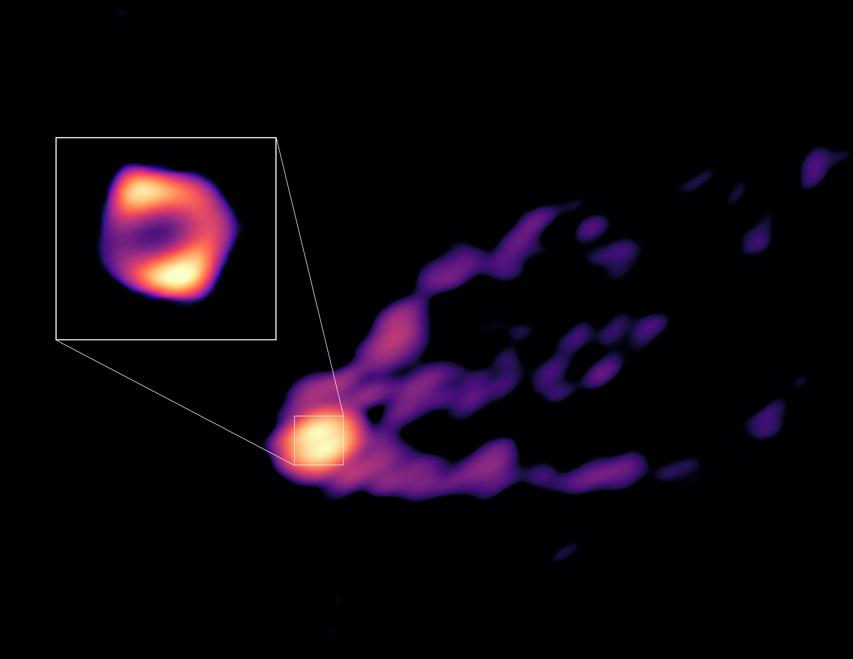

An international team led by Chinese astronomers has unveiled a new image of the supermassive black hole at the center of elliptical galaxy Messier 87, or M87, featuring its accretion disk and the powerful jet of subatomic particles being ejected from the disk. [Photo provided to chinadaily.com.cn]
An international team led by Chinese astronomers has unveiled a new image of the supermassive black hole at the center of elliptical galaxy Messier 87, or M87, featuring its accretion disk and the powerful jet of subatomic particles being ejected from the disk, according to a study published in the journal Nature on Wednesday.
The image is the first of its kind to show the relation between the black hole's surrounding accretion disk and the jet. The disk is made of bright and rapidly rotating particles orbiting around the black hole, while the jet is accelerated particles traveling away from the black hole at nearly the speed of light.
The image will allow scientists to better understand supermassive black holes, their accretion disks and how these can power black hole jets, which are considered one of the most energetic events in the universe.
Black hole jets have captivated scientists since their discovery in 1918. After over a century of research, scientists suspect that accretion disks help produce these jets, but they don't yet know how.
A major breakthrough occurred in 2017 when the Event Horizon Telescope, a virtual observatory consisting of telescopes spanning the planet operated via international collaboration, took the first image of the M87 supermassive black hole. However, the image only revealed the black hole's shadow surrounded by accretion flows.
Now, another international project involving 16 telescopes and 121 scientists from 17 countries and regions has photographed the supermassive black hole at a different wavelength, which shows a mysterious black hole jet linking to the accretion disk. The image is likely to help scientists uncover the jet's origin, experts said.
Lu Rusen, a researcher from the Shanghai Astronomical Observatory of the Chinese Academy of Sciences who led the collaboration, said the new photo also revealed that M87's ring is bigger and thicker than previously observed.
"This shows that materials falling into the black hole are creating radiation depending on its wavelength, which allows us to have a more comprehensive understanding of the physical process around a black hole," he said.
In the future, Lu said scientists hope to capture more photos of the black hole in different wavelengths of light, so researchers can have a better understanding of the supermassive black hole and its effect on its surroundings.
Another goal is to film the black hole and examine its changes as time passes, he added. This would require piecing together years of observational data, but as more telescopes join the international endeavor, it won't be long before humanity gets its first "black hole movie". (China Daily)

86-10-68597521 (day)
86-10-68597289 (night)

52 Sanlihe Rd., Xicheng District,
Beijing, China (100864)

